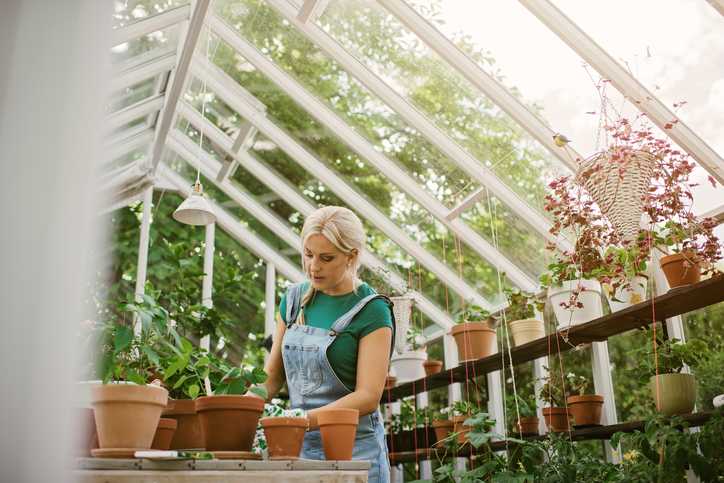With high altitudes, low humidity, and rapidly fluctuating temperatures, Colorado can be unforgiving on a home gardener. Raised beds help a little, but it’s still a fairly small growing window. To make things easier, consider installing a greenhouse on your property.
First, greenhouses help regulate the temperature around your plants so they can thrive in areas where they otherwise might struggle to grow. They also help keep the air around the plants more humid. Greenhouses protect your garden from sudden storms or other surprise climate shifts. Finally, they protect against wildlife looking to score an easy meal from your garden bed. Below are some tips on starting your own greenhouse.
Where to Place Your Greenhouse
Before you do anything, you’ll need to find the best spot on your property to place the greenhouse. Your goal is to find a place where your greenhouse would get at least six hours of winter sun exposure. If the same spot also gets afternoon shade in the summer, then it’s even better. Think about placing the narrow end of the greenhouse facing east to allow the long side of the greenhouse to receive full sun exposure.
There are many DIY plans for greenhouses of varying sizes online, or you can buy a kit. Either way, think about setting up the greenhouse on a base to increase stability and longevity. It will also help keep out burrowing pests and keep you from having to work in the mud during rainy seasons.
What Should Be Included in Your Greenhouse
Temperature Control
To keep the temperature constant, you need proper ventilation and the ability to move air around. Most greenhouse kits come with an automatic ventilation system, and if you are building a DIY greenhouse, you should get one. One or two oscillating fans will also help keep temperatures consistent. Also consider installing a temperature monitor. Good ones can connect to your smartphone to warn you if temperatures in your greenhouse have swung out of control in either direction, requiring your immediate attention.
Electricity
If you intend to grow from seed, you’ll need heat mats. Seedling trays sit on the mats, which keep the soil warm even if the temperature drops. Germination heat mats come with a thermostat, so you can set the exact temperature you’ll need to keep your seeds happy and healthy. To power all these devices, your greenhouse will also need electricity.
Water Source
While it’s not strictly necessary to have plumbing for water, setting up a watering system in your greenhouse will save you from running your hose out. It also helps during the winter months, when your hose line can freeze.
Shade
Not all plants require the same amount of sun, and so having an area in your greenhouse covered by shade cloth can help you grow plants that only require partial sunlight. Sometimes the sun warms the greenhouse too much for the ventilation system to offset, and some shade cloth can help mitigate damage to your plants on those extra warm days.
What to Grow in Your Greenhouse
Now that you have your greenhouse, what should you start planting? The short answer is: whatever you want. If you are new to greenhouses, however, there are some plants that thrive easily, so you can get a feel for your new system. If you are at a loss at where to start, try growing some of these to get your bearings:
- carrots
- strawberries
- garlic
- green onions
- spinach
- tomatoes
- zucchini
- sunflowers
- peppers
Your first year with your greenhouse will be very experimental. You’ll discover exactly how much sun your plants will get and the general weather conditions affecting your greenhouse through the year. You’ll discover how long it takes for seeds to germinate and what sort of pests you’ll have to deal with.
Insure Your Property with Farm Bureau Insurance
If your greenhouse is a certain distance from your home, it may not be covered against damage or loss under your homeowners insurance policy. Check with your Farm Bureau Insurance agent to see if you should add additional coverage to protect your greenhouse investment. Get started by contacting one of our local agents.

